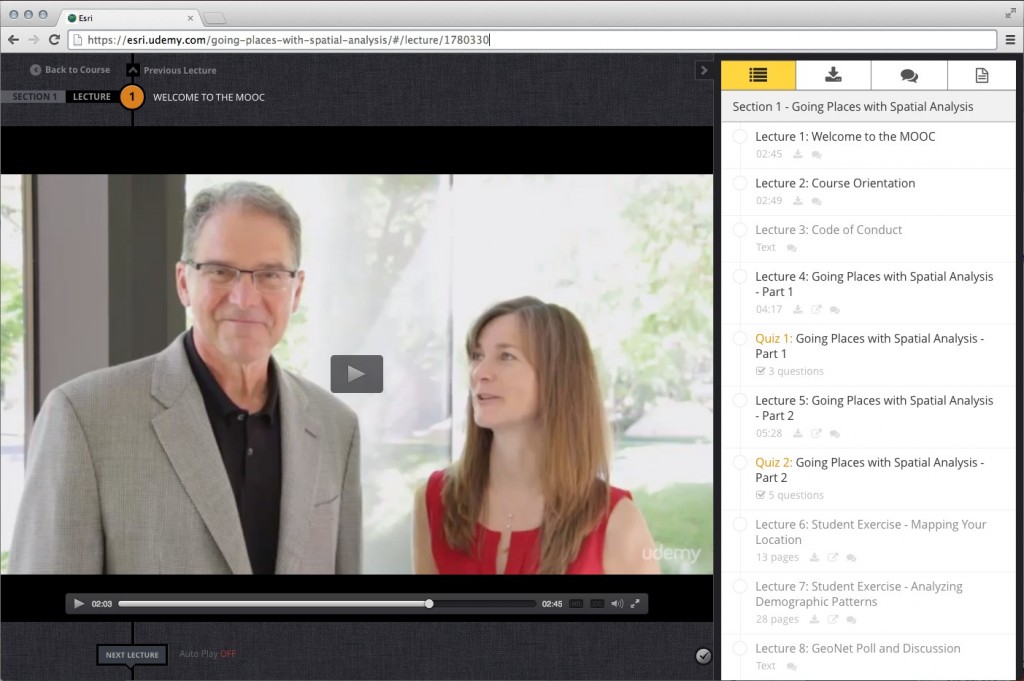Developing Support for the Program
David DiBiase is Director of Esri’s Education Outreach team and former Director of the John A. Dutton e-Education Institute at Pennsylvania State University. I recently had the opportunity to chat with David about the importance of offering Massive Open Online Courses (MOOCs) as part of Esri’s well-established education program. In part II of our discussion, David talks about developing support for the program. [You can read the first part of our discussion here.]
Baumann: Did you have any difficulty getting the project approved and pulling together the Esri team to create and manage the MOOC?
DiBiase: No, it was really just a matter of timing. I met with Esri president Jack Dangermond and Education Services division director Nick Frunzi early in 2014. I presented the idea that we could create a free online course that would enable thousands of learners to “test-drive” the spatial analysis tools in ArcGIS Online. They agreed to support it on the spot.

Baumann: Why did you decide to offer an intermediate level MOOC on GIS, rather than an introductory class?
DiBiase: We want to create large-scale online courses that complement offerings by colleges and universities, not compete with them. Providing no-cost access to the analytic capabilities of ArcGIS Online is not something that a higher education institution can do without our help. Our hope is that educators will use our non-credit MOOCs as assignments or supplementary activities in their own for-credit courses. We also provide technology and staff support to institutions that request it for their own MOOCs. Whether it’s ours or an education partner’s MOOC, the key is to reach a mass audience that is, to some extent, new to GIS.

DiBiase: Our pilot offering of Going Places with Spatial Analysis opened in September 2014. It’s a six-week online course that includes free access to ArcGIS Online. We chose to limit enrollment for the first offering because everything about the course was new. So, we invited the first 1,200 students who expressed interest in participating. We offered the course again this March and the registration was nearly 22,000, so the program is building.
—–
In Part III of our discussion, David talks about the future of the MOOC program at Esri.
